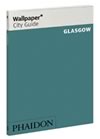
Burns Night
365/25 Ode To A Haggis by mccheek
Every 25th January, Scotland celebrates one of its most important events: the birth of its most beloved troubadour also known as the Caledonian Bard. Robert Burns is the vernacular poet par excellence, the writer of the people, and his short life had a major impact on Scottish society. 25th January is Burns Night, a night when Scots, expatriates, foreigners in Scotland and other people around the world pay homage to the poet with the traditional Burns supper.
This festivity is comparable to Christmas, as all revolves around a shared dinner, indoors – of course, it is January – with a specific menu. The night also has something of Guy Fawkes Night (after the man who tried to blow up the English Parliament with gunpowder on a 5th November) for its secularism, although this last one is not celebrated with food, but, appropriately, with fireworks. The important element in Burns Night, though, is poetry, and the drama involved in reciting it. All is conveniently moistened with whisky, so the melodramatic thespians are given free rein. This is what makes this event unique. Poetry, these days , is relegated to the academic and the historical but here resurfaces with all the strength given by it being spoken. The atmosphere in the streets just before 6 pm – dinner time – is absolutely electric. From early January, pubs change their Christmas decorations to those typical of Burns (think Tartan and pictures of the bard, for example).
‘Rabbie’ Burns was born in Ayrshire, which is on the west coast of Scotland, south of Glasgow, only a short journey by train. From a poor background, he became indispensable in the intellectual soirees of Edinburgh and created a precedent in this country, already committed to literature and poetry, as can be seen by the Edinburgh International Book Festival and Aye Write! in Glasgow. Those with historical flair can board a train from Glasgow Central to Ayr (near Glasgow Prestwick Airport), and from there take the 57 bus (from 8.45 to 5.50 Monday to Saturday) to Alloway to visit the Robert Burns National Heritage Park, with the traditional house where he was born and many of the landscapes and buildings mentioned in his poems. If the weather is good and you fancy a bit of exercise, you can also reach the park by bus (X77 from Buchanan Bus Station, every hour) and then rent a bicycle.
The Night, if you celebrate it as it should be, has a very particular script. The men wear the traditional Scottish outfit: kilt, sporran with dagger (sgian Dubh), Ghillie shoes and woolly socks. The entertainment for the night begins with bagpipes. Then comes the Address to a Haggis, the star of the night’s dinner which also includes other traditional dishes. Haggis is a kind of lamb sausage with oatmeal, very cheap (-£ 0.79 in Lidl), served with mashed potatoes and swede (the famous haggis, neeps and tatties). It is the easiest thing in the world to cook, so the evening is very popular among the large student population of Glasgow. For a fairly decent haggis, just buy it in the supermarket and cook it in a microwave (although steamed or roasted always works best, of course, but takes time). The potatoes and the swede are boiled separately, and the puree is best done by hand. Add a good dose of cream and butter, season well and pour a splash of whisky (this is my little secret). The simplicity of the dish indicates that the key to its tasting is in the presentation. With a small circular mould, the most attractive thing to do is layering. Mashed potatoes first, then the haggis and finally the neeps. It is usually served with a whisky sauce although I tried a peppercorns and cream one at the 13th Note, and it was fantastic. A simple and humble dish, but one which is given a toast before it is eaten! Toasts are important in Burns Night and there will be many throughout for which I would recommend the traditional whisky. Although perhaps it will only work before the meal, since its taste may impact on the palate and you may not taste any of the other flavors. If the dish is done according to the Scottish tradition, it should already contain quite some whisky! Immediately after dinner dinner, are the speeches, which turn around the life of the poet, his poems and songs. This is followed by the traditional toast to the lassies and its response, a thanksgiving and the Auld Lang Syne, a famous folk song with lyrics by Burns.
In this cold, late January, whisky, dancing and carbohydrates help to maintain the body at a reasonable temperature. The poems help maintain the national intellectual passion burning.
Useful information
Visitor Information Centre
22 Sandgate, Ayr
Tel (01292) 288 688
www.ayrshire-arran.com




